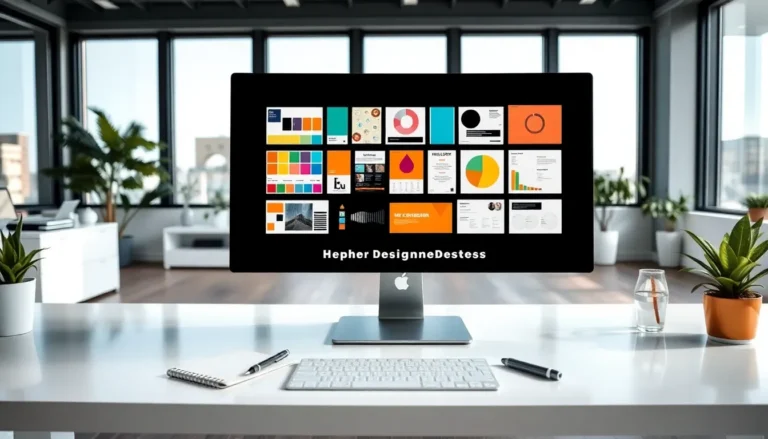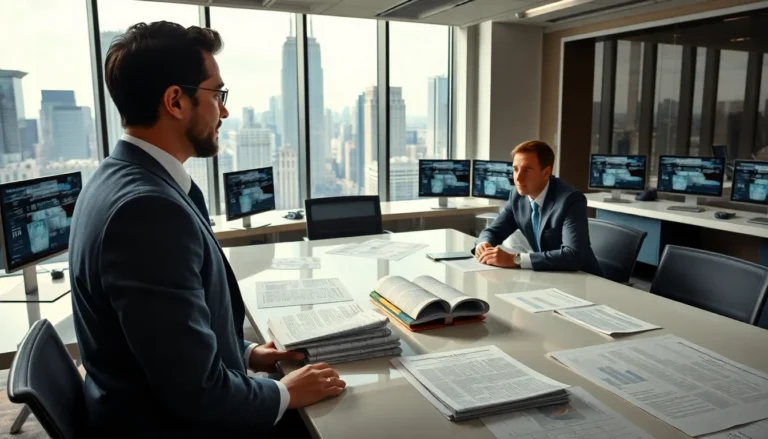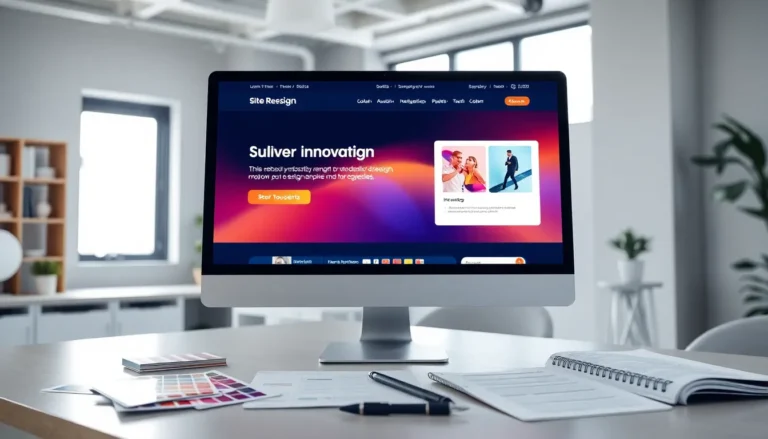Table of Contents
ToggleIn a world where everything seems to be designed for maximum efficiency and minimal flair, industrial design concepts emerge like a breath of fresh air. These ideas blend functionality with creativity, proving that even the most utilitarian objects can be eye-catching. Whether it’s a sleek piece of furniture or a quirky gadget, industrial design adds a dash of personality to everyday life.
Overview of Industrial Design Concepts
Industrial design focuses on creating products that are both functional and aesthetically pleasing. It prioritizes user experience, ensuring that objects are not only effective in their purpose but also enjoyable to use. This discipline emphasizes innovation while considering sustainability, with designers often seeking eco-friendly materials and processes.
Designers employ various strategies to enhance the usability and appeal of products. They analyze user needs and behaviors, informing design choices that bridge technical functionality with visual harmony. This approach leads to the creation of distinctive smartphones, stylish furniture, and ergonomic tools.
Collaboration plays a significant role in industrial design. Designers work alongside engineers, marketers, and manufacturers, transforming initial concepts into market-ready products. This teamwork ensures that each aspect of the design meets practical requirements while remaining visually compelling.
Trends in industrial design continue to evolve, driven by technological advancements and changing consumer preferences. In recent years, a shift toward minimalism and multifunctionality has gained traction. Items once seen as purely utilitarian now showcase elegant forms and innovative features.
Research highlights that good industrial design can enhance both brand image and customer satisfaction. Consumers increasingly recognize the value of well-designed products, leading to increased demand for quality designs across various industries. As a result, industrial designers play a critical role in shaping modern consumer markets by transforming everyday items into engaging experiences.
Key Principles of Industrial Design
Industrial design hinges on several key principles that ensure products are both effective and appealing. These principles focus on enhancing user experience, fostering creativity, and addressing environmental concerns.
Functionality
Functionality remains at the core of industrial design. Designers aim to create products that serve their intended purpose efficiently. Clear usability features make items intuitive for consumers. For instance, a well-designed kitchen tool enhances cooking efficiency while ensuring safety. Ergonomic considerations also factor into functionality, as products must fit comfortably in users’ hands. Through thorough research, designers analyze user needs, ensuring that each product addresses specific challenges effectively.
Aesthetics
Aesthetics play a crucial role in attracting consumers. Visual appeal contributes significantly to a product’s market success. Designers blend form with function, crafting products that are not only useful but also pleasing to the eye. Sleek lines and harmonious color schemes often lead to higher consumer engagement. Examples include modern furniture that complements interior design or gadgets that showcase innovative features prominently. The overall look can create emotional connections, encouraging buyers to choose one product over another.
Sustainability
Sustainability has become an essential consideration in industrial design. Designers opt for eco-friendly materials to minimize environmental impact. This shift reflects growing consumer demand for responsible products. Biodegradable plastics, recycled metals, and sustainable wood are now common choices. Innovation in manufacturing processes also enhances sustainability by reducing waste and energy consumption. Implementing these practices not only benefits the environment but also boosts brand reputation, connecting with eco-conscious consumers.
The Role of User-Centered Design
User-centered design focuses on creating products that effectively address user needs and preferences. Prioritizing the user experience ensures designs resonate with consumers, leading to greater satisfaction and market success.
Understanding User Needs
Identifying user needs forms the foundation of effective industrial design. Designers gather insights through surveys, interviews, and observation, resulting in a thorough understanding of pain points. They analyze behaviors, preferences, and feedback to tailor products that meet demands. For instance, ergonomic considerations in kitchen tools address comfort while cooking. An emphasis on inclusivity ensures that designs cater to diverse user groups, promoting accessibility and usability. Comprehensive user research significantly informs creativity, enabling innovations that align closely with consumer expectations.
Prototyping and Testing
Prototyping and testing play crucial roles in refining designs. Creating prototypes allows designers to visualize concepts and gather user feedback early in the development process. Iterative testing leads to modifications that enhance functionality and aesthetics. Engaging users in testing sessions provides real-world insights, revealing potential issues that may not surface in theoretical assessments. Feedback from user testing informs adjustments to improve usability. Rapid prototyping techniques enable efficient iteration, helping teams explore multiple design solutions swiftly. Ultimately, a well-structured testing phase contributes to successful product launches that resonate with the target audience.
Emerging Trends in Industrial Design
Emerging trends in industrial design reflect contemporary consumer preferences and technological advancements. Two notable directions include minimalism and smart technology integration.
Minimalism
Minimalism influences industrial design by prioritizing simplicity and functionality. Designers showcase clean lines and uncluttered forms, stripping away unnecessary elements to emphasize essential functionality. Aesthetically pleasing objects emerge from this approach, often featuring neutral color palettes. Consumers increasingly favor minimalistic designs that enhance their living environments while maintaining practical use. Examples include furniture that combines elegance with versatility, such as modular seating that adapts to various spaces.
Smart Technology Integration
Smart technology integration enhances product functionality by incorporating digital innovation. Designers utilize sensors, connectivity, and user interfaces to create intelligent products that improve everyday experiences. Household items, like smart kitchen appliances, facilitate effortless cooking through programmable settings and remote control features. Additionally, wearable technology, such as smartwatches, offer health monitoring capabilities that cater to user well-being. By merging traditional design with advanced technology, industrial designers increase usability and appeal to tech-savvy consumers.
Industrial design concepts are redefining how people interact with everyday objects. By blending functionality with creativity designers are not just creating products but also enriching user experiences. The focus on aesthetics and sustainability ensures that these designs resonate with modern consumers who value both style and environmental responsibility.
As trends evolve toward minimalism and smart technology integration the future of industrial design promises to be exciting. Designers will continue to play a pivotal role in shaping products that not only meet practical needs but also foster emotional connections. This discipline will undoubtedly remain at the forefront of innovation influencing how society engages with its environment.







